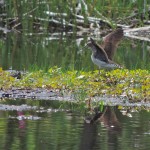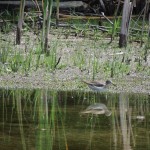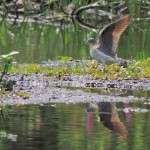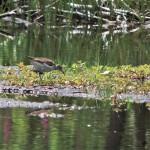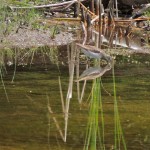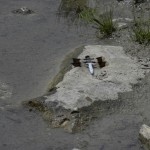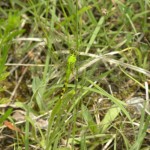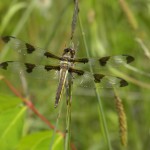6 August 2014 Kilbride, ON. Our aging cat spent most of this afternoon sprawled in the shade; had I done the same (and I was tempted) I would have missed my Bird of the Day, a Solitary Sandpiper.
Instead I decided to revisit the site where last week, last posting, I’d enjoyed the company of Cedar Waxwings. I went back, not for the waxwings necessarily, but for the place; a small lake in a quiet wooded valley. It has an interesting history, in the late nineteenth and early twentieth century the valley was the site of small scale marl quarrying, Marl is a soil conditioner that is common in post-glacial lake bed sediments and often found underlying peat bogs.The quarrying, really more like small-scale, hand-dug, open pit mining, has left a string of little rectangular lakes connected by a small stream. The whole area is now owned, managed and notionally protected by a conservation authority and is lightly used, legally for hiking and less so by a few covert fishermen.
I was struck by the silence of the birds. The sandpiper peeped weakly, just once, as it flew away from me. It didn’t go very far and I was able to watch it for quite a while. A dainty little bird, dusted with light speckles on its dark back and a conspicuous eye ring, it is the Nearctic counterpart of Europe’s Green Sandpiper. Cedar Waxwings were around, still hawking for insects and a fly-catching Eastern Phoebe too, neither had anything to say; perhaps they felt much the same way as our cat, that the afternoon was really not meant for exertion.
The Solitary Sandpiper’s name is appropriate; I only ever see one bird at a time. Presumably every now and then though, a pair gets together to ensure continuity of the species, but I’ve never seen a throng like that. This one is on its lonely southbound migration, with breeding taken care of for another year, it’s heading back to Central and South America. Here are a few photos of it (visible only on the website, not if you’re reading this as an email) I wonder if it is the same bird as the one I saw in the same place almost exactly two years ago.
A family group of Eastern Kingbirds broke the silence. Also flycatchers, they kept up a light chattering, calling from one exposed treetop to another. Kingbirds are the standard-bearers of the family of birds known as Tyrant Flycatchers, indeed their scientific name, Tyrannus tyrannus, speaks of their I’m-in-charge-around-here personality. They have a voice that sounds like the rattle of small stones in a tin can, a sound reflected in the French-Canadian name, Tyran tritri.
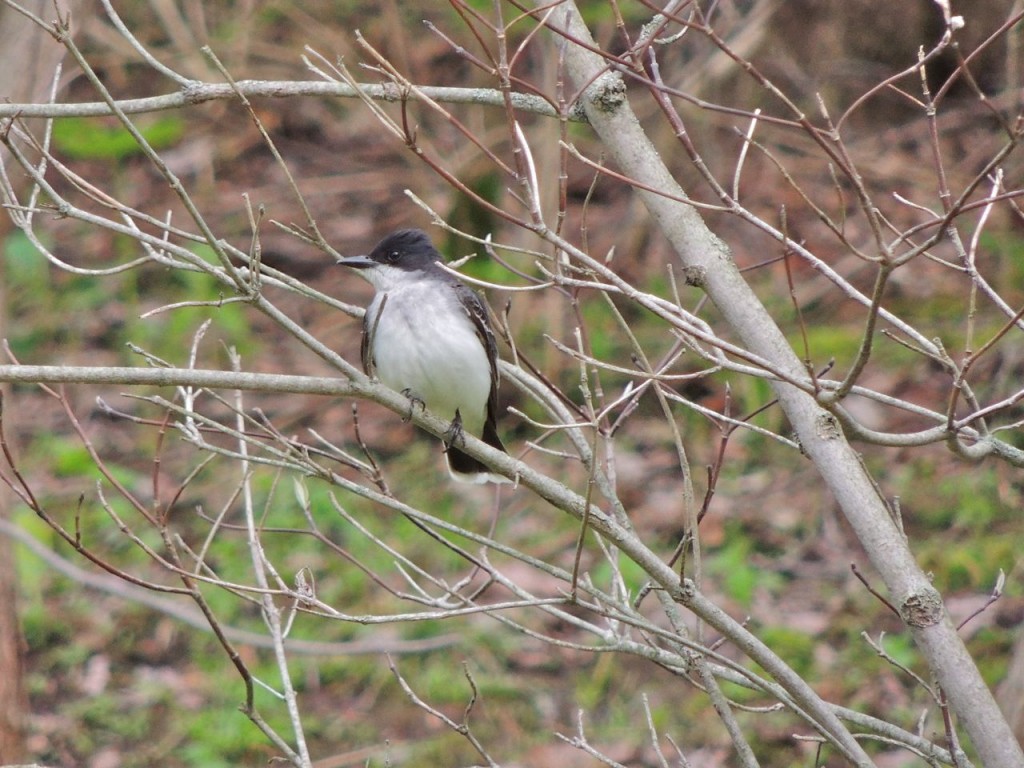

The long, quiet sit produced more than birds: A large Snapping Turtle cruised by, barely visible just below the water surface but leaving a long trailing plume of silt. A small, malevolent-looking Northern Pike, perhaps six inches long, hung motionless in a small weedy gully; And the air was full of dragonflies: Eastern Pondhawks, Common Whitetails and Twelve-spotted Skimmers.
When I finally checked the time I realised that outside this quiet little corner, rush hour was well under way. I joined it and headed home to find that our cat hadn’t moved.
